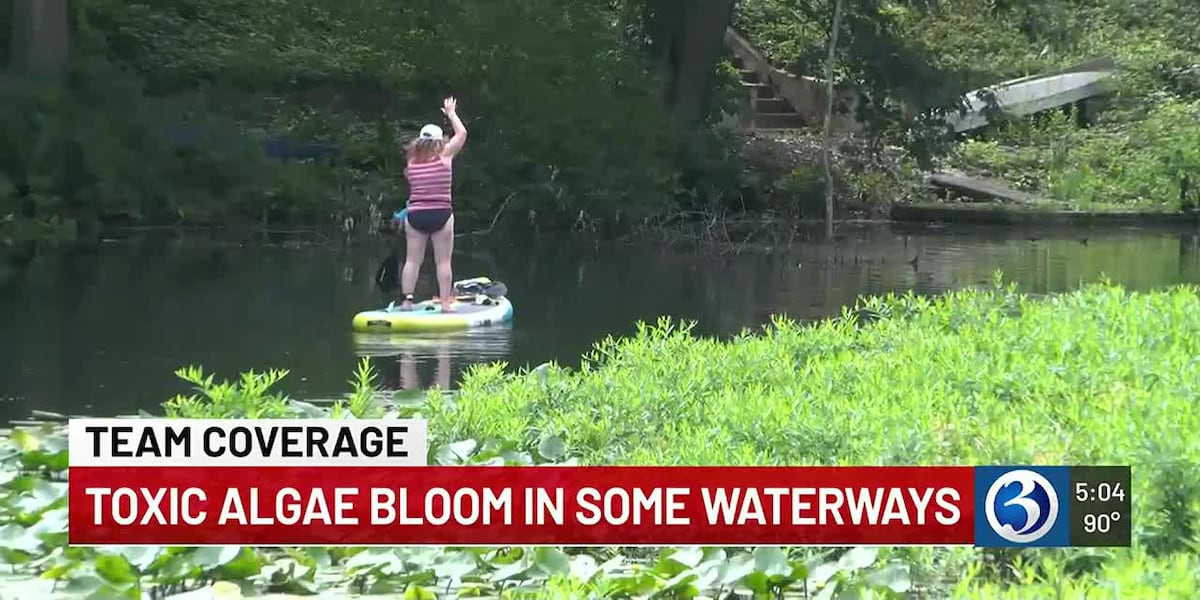Climate Crisis Alert: Toxic Algae Blooms Threaten Connecticut's Waters Earlier Than Ever
Connecticut's lakes and ponds are experiencing an early onset of toxic blue-green algae blooms, pointing to concerning environmental changes. Public health officials warn of serious risks while environmental experts monitor the situation closely, highlighting the growing impact of climate change on local ecosystems.

Warning signs posted at Quonnipaug Lake as toxic blue-green algae threatens Connecticut's waterways
Environmental Warning Signs Point to Climate Change Impact
Connecticut's waterways are facing an increasingly urgent environmental challenge as toxic blue-green algae blooms appear earlier than usual, raising concerns about both public health and climate change implications.
Early Warning Signs Worry Environmental Experts
At Quonnipaug Lake in Guilford, a popular recreational destination, the Connecticut Department of Energy and Environmental Protection (DEEP) has already issued warnings about potentially dangerous algae blooms. This unusually early appearance signals a troubling trend in our changing environment.
"I'm seeing the warnings for it earlier. Usually it's late August to September," notes local resident Marisa Esposito, highlighting the shifting patterns that may indicate accelerating environmental changes.
Understanding the Environmental Impact
While blue-green algae naturally occur in Connecticut's waterways, their rapid multiplication is directly linked to environmental factors that have been exacerbated by climate change:
- Rising water temperatures
- Increased exposure to sunlight
- Higher nutrient levels in water bodies
Public Health Implications
The health risks associated with these toxic blooms cannot be understated. DEEP officials warn that contact with or ingestion of affected water can lead to:
- Skin irritation and itching
- Nausea and vomiting
- Diarrhea
- In severe cases, liver damage and neurological problems
Community Response and Monitoring
Local authorities and lifeguards are taking proactive measures to protect public safety. Head lifeguard Nate Pizzuti describes the visible signs: "It's like a big circle with really bright green. It's really hard to miss."
Taking Action
DEEP maintains active monitoring of lakes and ponds, particularly those with state-owned boat launches. Citizens are encouraged to:
- Check DEEP's website before water activities
- Avoid all contact with water if algae blooms are visible
- Report any suspected algae blooms to local authorities
Rachel Whitman
Rachel L. Whitman is a political columnist and investigative journalist based in Washington, D.C. Her writing focuses on democratic resilience, civil rights, and the intersection of technology and public policy. With a background in law and public affairs, she brings sharp analysis and a deep commitment to progressive values.
